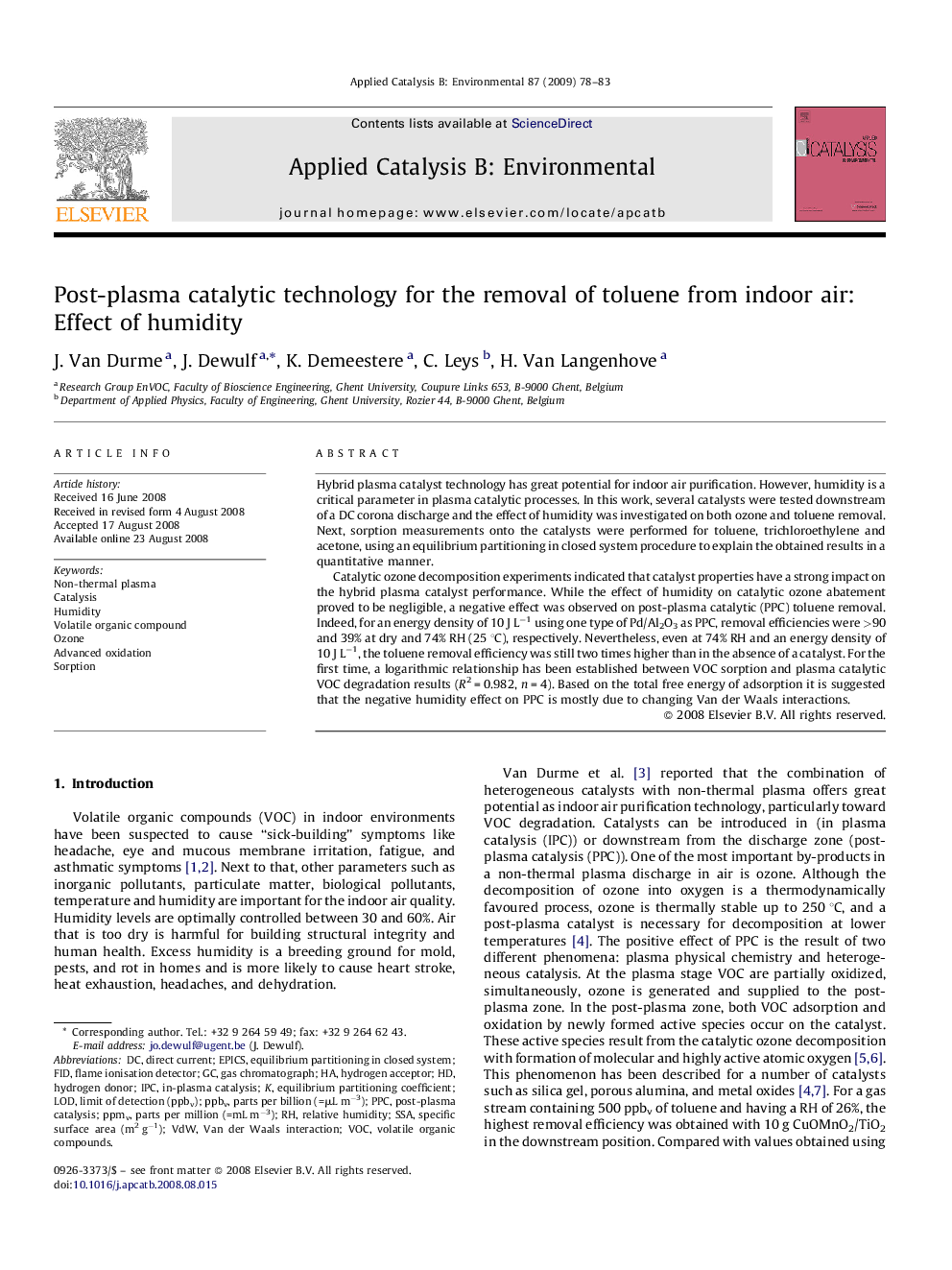| کد مقاله | کد نشریه | سال انتشار | مقاله انگلیسی | نسخه تمام متن |
|---|---|---|---|---|
| 48112 | 46493 | 2009 | 6 صفحه PDF | دانلود رایگان |

Hybrid plasma catalyst technology has great potential for indoor air purification. However, humidity is a critical parameter in plasma catalytic processes. In this work, several catalysts were tested downstream of a DC corona discharge and the effect of humidity was investigated on both ozone and toluene removal. Next, sorption measurements onto the catalysts were performed for toluene, trichloroethylene and acetone, using an equilibrium partitioning in closed system procedure to explain the obtained results in a quantitative manner.Catalytic ozone decomposition experiments indicated that catalyst properties have a strong impact on the hybrid plasma catalyst performance. While the effect of humidity on catalytic ozone abatement proved to be negligible, a negative effect was observed on post-plasma catalytic (PPC) toluene removal. Indeed, for an energy density of 10 J L−1 using one type of Pd/Al2O3 as PPC, removal efficiencies were >90 and 39% at dry and 74% RH (25 °C), respectively. Nevertheless, even at 74% RH and an energy density of 10 J L−1, the toluene removal efficiency was still two times higher than in the absence of a catalyst. For the first time, a logarithmic relationship has been established between VOC sorption and plasma catalytic VOC degradation results (R2 = 0.982, n = 4). Based on the total free energy of adsorption it is suggested that the negative humidity effect on PPC is mostly due to changing Van der Waals interactions.
Journal: Applied Catalysis B: Environmental - Volume 87, Issues 1–2, 16 March 2009, Pages 78–83